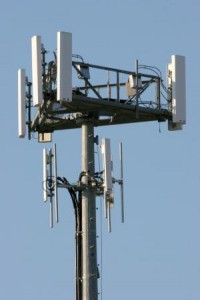The media reform group FreePress has a campaign called Change the Channels, and it is currently profiling our fair city, saying, “Peoria, Illinois is suffering from one of the worst cases of covert consolidation in the country; all five of its commercial TV stations produce just two distinct newscasts and are controlled by only two companies.” Those two companies, of course, are:
- Granite Broadcasting, which owns and operates WEEK (channel 25) and, through a local marketing agreement (LMA), operates WHOI (channel 19) and WAOE (channel 59)
- Nexstar Broadcasting Group, which owns and operates WMBD (channel 31) and, through an LMA, operates WYZZ (channel 43)
They go on to say, “This situation is unacceptable. Two newsrooms simply cannot provide Peoria…with the amount of local news coverage and diversity of perspectives that residents need to stay informed.”
Of course, most of this isn’t news to the residents here in Peoria, but they did have one other claim that I hadn’t heard before: “Three of those stations, WEEK, WHOI and WAOE, are part of an anti-competitive conspiracy that spans two states.” They explain:
Granite’s Shared Services Agreement with Barrington Broadcasters is a particularly outrageous anti-competitive conspiracy between the two companies. Each company owned one station in the Peoria market, as well as one station in the Syracuse, N.Y., market. In order to avoid competing with one another in both markets, they simply “swapped” control of the stations, yielding these comparable markets completely to their former competition. This shady deal cost more than 30 jobs in Peoria (along with 45 in Syracuse), destroyed competition and left viewers in both communities with less local news.
Note that phrase: “to avoid competing with one another.” Barrington Broadcasting owns WHOI in Peoria, and when they were producing their own news program, it was unique in the Peoria area, often including investigative reports and stories that the other stations weren’t covering. Once Barrington and Granite entered into an LMA, the reporters were fired and the anchors moved to a set in the same building as WEEK. Now the WEEK and WHOI news programs are nearly identical.
Granite is now in a dispute with the Peoria chapter of the American Federation of Television and Radio Artists (AFTRA) over contract language that would give Granite “jurisdictional flexibility” — something they could use to move the anchor jobs to their central broadcasting hub in Ft. Wayne, Indiana, for example. The local general manager denies the company has any plans to do so, but he won’t explain why the company insists on having the “jurisdictional flexibility” language in the contract. Granite imposed the contract, and AFTRA has filed a grievance.
The Change the Channels campaign is asking those opposed to these kinds of shared services agreements (which they call “covert media consolidation”) to write to the Federal Communications Commission and ask them to put an end to the practice.
The rules are supposed to protect localism, diversity and competition on the public airwaves, but in almost 80 markets across the country, these rules have been circumvented. Media companies have taken advantage of loopholes to covertly consolidate more than 200 stations, colluding rather than competing in order to cut costs.
As a result, communities are getting less local news than ever before. When the exact same news is aired on several stations, fewer stories told, fewer viewpoints are presented, and the public airwaves are wasted on copycat broadcasts.
Continue reading Peoria ‘one of the worst cases of covert media consolidation in the country’

 District 150 has found a new way to get revenue: allow private companies to erect cell phone towers on school property.
District 150 has found a new way to get revenue: allow private companies to erect cell phone towers on school property.